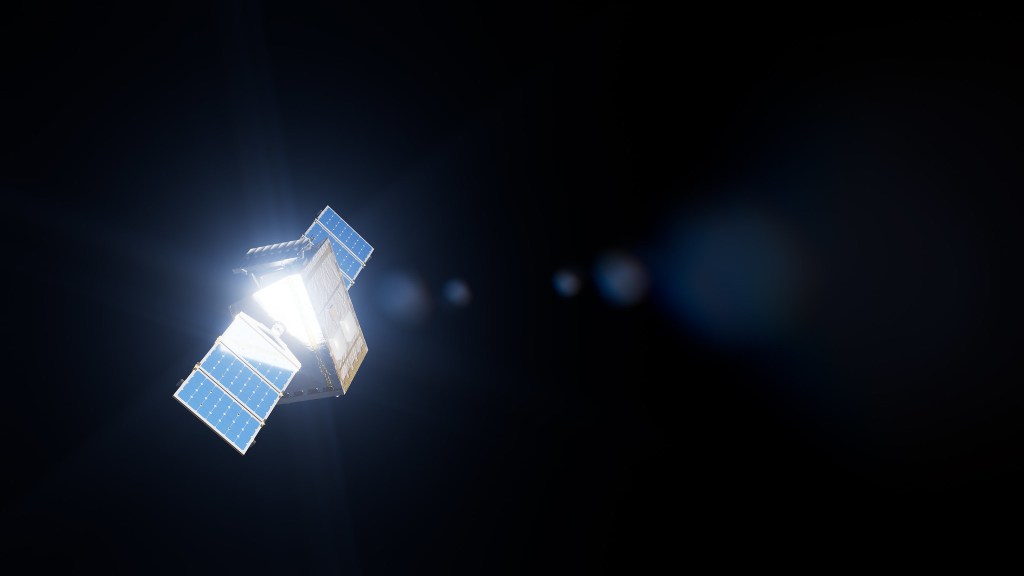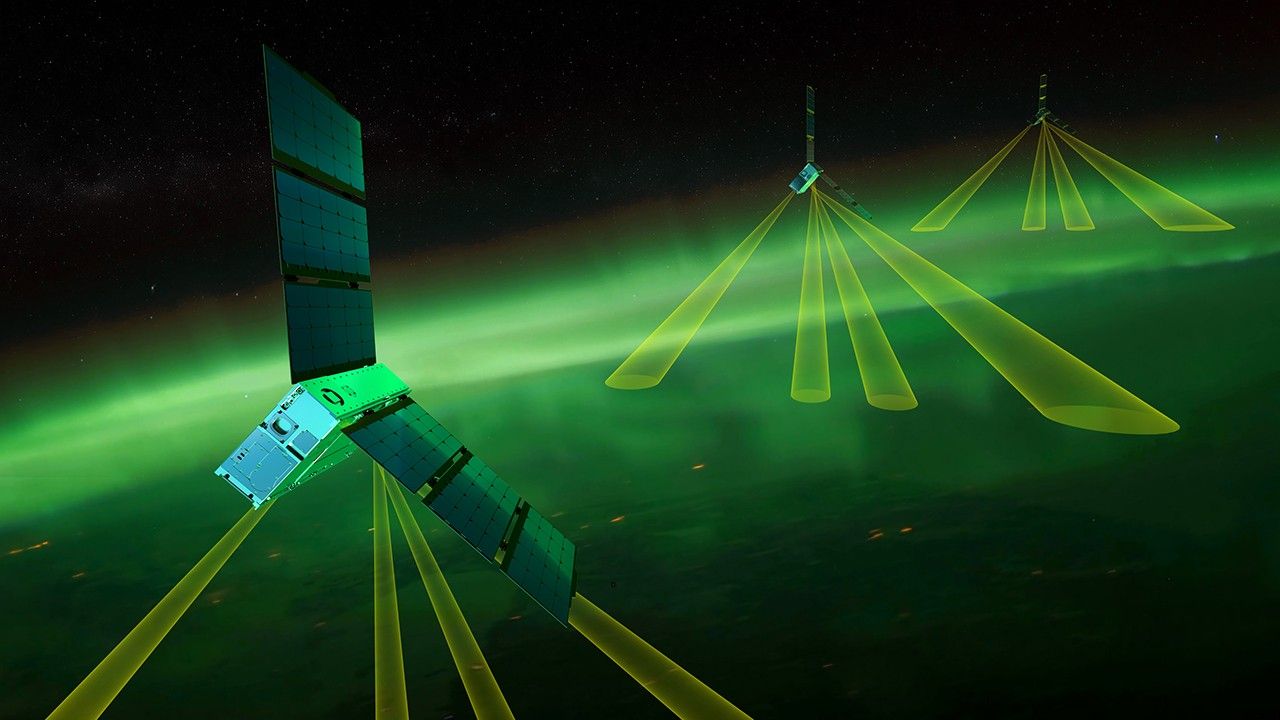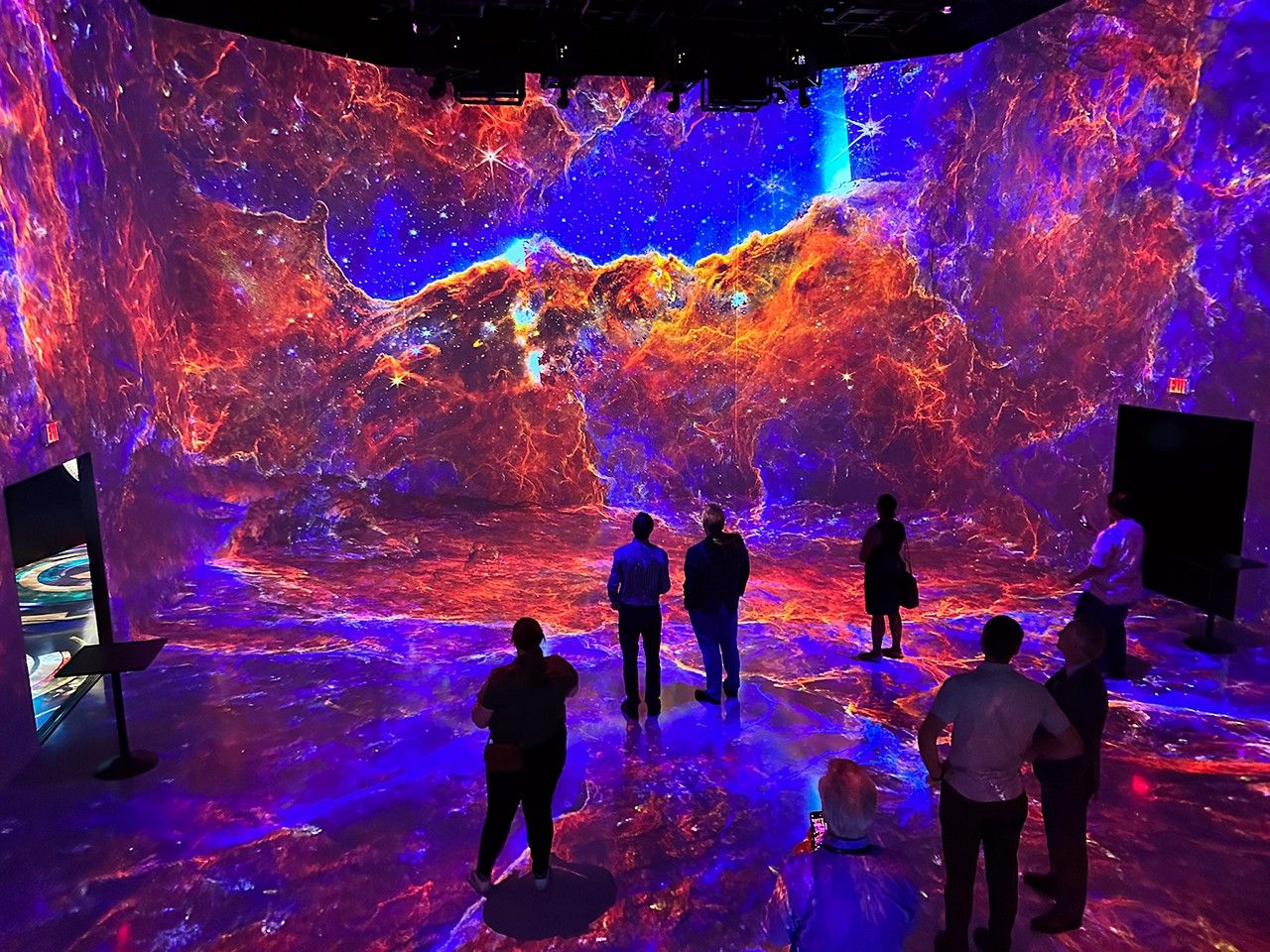Two main types of explosions occur on the sun: solar flares and coronal mass ejections. Unlike the energy and X-rays produced in a solar flare – which can reach Earth at the speed of light in eight minutes – coronal mass ejections are giant clouds of solar material that take one to three days to reach Earth. Once at Earth, these ejections, also called CMEs, can impact satellites in space or interfere with radio communications. During CME Week from Sept. 22 to 26, 2014, we explore different aspects of these giant eruptions that surge out from the star we live with.
Looking across the Mars landscape presents a bleak image: a barren, dry rocky view as far as the eye can see. But scientists think the vista might once have been quite different. It may have teemed with water and even been hospitable to microbial life. What changed?
One theory is that the continuous blast of solar particles from the sun – the constant stream of solar wind, coupled with more extreme explosions such as coronal mass ejections – might have been the culprit. On Sept. 21, 2014, a new NASA mission, the Mars Atmosphere and Volatile Evolution, or MAVEN, reached Mars after a 10-month journey. Now safely in orbit around Mars, MAVEN will observe the Martian upper atmosphere, including keeping an eye on just what effect the solar wind and CMEs have on the red planet. Such observations not only help us understand the history of what led to the desert surface we see today, but also pave the way for protecting astronauts on future visits.
The sun was once substantially more active than it is today. Our young sun is thought to have frequently – perhaps even daily — blasted out intense bursts of radiation that are more rare in modern times. Here on Earth, our atmosphere is largely protected from the solar wind by Earth’s magnetic field, but the evidence indicates that Mars’s magnetic field nearly vanished early in the planet’s history. So, over hundreds of millions of years, the particles from the sun could have worn away the Martian atmosphere, ultimately ripping most of it away and blowing it off into space. Testing that theory poses problems, though, as it’s tough to replicate such extreme conditions. MAVEN’s observations of an intense CME hitting Mars, however, could hold clues to what Mars endured, and how it was affected, eons ago.
NASA also cares about CMEs at Mars for another reason: These giant clouds of speeding solar material can impact computers aboard spacecraft and expose astronauts to dangerous radiation. We must understand such space weather events before sending humans to take their first step on this planet that still holds so many secrets.
Karen C. Fox
NASA’s Goddard Space Flight Center, Greenbelt, Md.
Related Link
More on MAVEN and space weather
MAVEN Solar Wind Ion Analyzer Will Look at Key Player in Mars Atmosphere Loss
What MAVEN Would See on Mars on Halloween





























